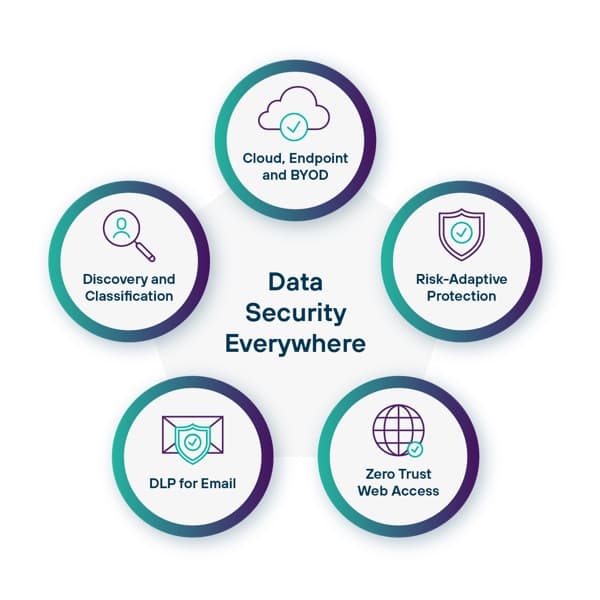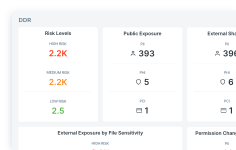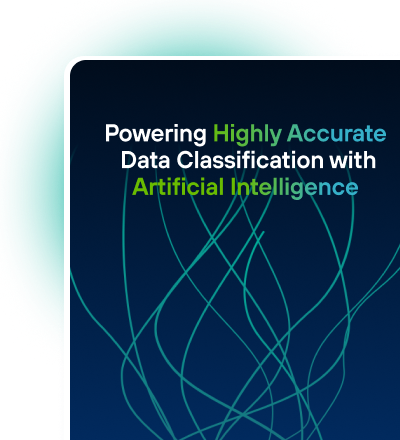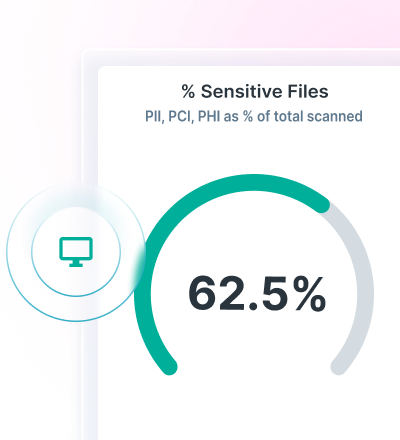Find and catalogue data across the enterprise at lightning speed.
Forcepoint Data Classification uses AI Mesh to deliver highly accurate data classification. Its networked AI architecture relies on a Small Language Model and advanced AI components to improve efficiency and reduce false positives.


Gartner®: Market Guide for Data Security Posture Management
In their first analysis of the new DSPM security category, Gartner® identifies the five main use cases, breaks down DSPM features and explores the requirements for securing GenAI.
Why Forcepoint Data Classification?
Classify data across multiple sources and use AI Mesh to continuously improve its accuracy and efficiency, saving organizations valuable time and resources.
Coverage of the broadest range of data types in the industry helps to streamline compliance, all while delivering better protection for organizations’ data.
Integrate with Enterprise Data Loss Prevention (DLP) to select the requirements and criteria for data classification and easily enforce DLP policies, without the need for extensive retraining.
AI Mesh rapidly and accurately classifies data within milliseconds, streamlining processes and reducing manual efforts to allow teams to focus on higher-value tasks or more significant incidents.
Avoid costly non-compliance fines with out-of-the-box key regulations and the broadest coverage of data types in the industry.

Data Security Everywhere You Need It
Secure data everywhere with Forcepoint. Prevent breaches, simplify compliance, unify policy management and adapt to risk in real time with our data security solutions.
Forcepoint DLP: Safeguard sensitive information and enforce compliance with DLP Software-as-a-Service (SaaS).
DSPM (Data Security Posture Management): Automate data discovery, classification and orchestration to get total control and visibility of your data across the enterprise.
Risk-Adaptive Protection: Automatically adjust policies based on user behavior to adapt in real-time to emerging risks.
Frequently Asked Questions
What is data classification?
Data classification is the practice of tagging and organizing data into pre-defined categories, making it easier to locate and retrieve while enforcing secure access for authorized users.
Why is data classification important for organizations?
Data classification practices are necessary for maintaining a strong security posture. By ensuring that security teams know where to find sensitive information and by putting rules in place about who is allowed to access it, you can prevent or contain data breaches and keep unauthorized users away from resources they shouldn’t have.
What are the types of data classification?
Content-based classification: This is the practice of examining files and searching for sensitive information inside them. This can be helpful if you have a problem of information that is not for public consumption hiding in seemingly innocuous file types.
Context-based classification: Instead of examining file contents directly, this approach primarily looks at the metadata associated with files to find clues indicating that data inside is sensitive. This may include identifying the location where a file is saved, which user created it or which application the file is built for. This approach works well when your user base is well-trained and when you already have a degree of control over your sensitive data.
User-based classification: This puts the burden upon users to comb through files and categorize them. While at its best this approach can significantly cut down on false positives, it relies upon having not only a highly trained user base but also the time to manually classify data. That means that it is typically only suitable for a leaner organization or a smaller dataset.
What are best practices for implementing data classification?
Identification: Find where your sensitive data resides, including cloud repositories and physical hard drives, and take any necessary immediate steps to secure them with encryption, physical access controls, etc.
Organization: Come up with the process that you will use to organize data into categories.
Training: Empower employees to take a role in tagging data and placing it in the proper place based on its category. The more people who have a role in the process, the more stringent your training needs to be to make sure that human error doesn’t compromise your efforts.
Compliance: Understand the applicable data security and data privacy regulations for your operations, along with the penalties for noncompliance.
Solutions: Locate the data classification solution that best suits your organization. In many cases it can be best to utilize a comprehensive data security platform that can assist with data discovery, classification and prioritization instead of patching together different solutions from various vendors.
Can data classification help with regulatory compliance?
Yes, Forcepoint Data Classification can help streamline compliance in 80+ regions. It helps you avoid costly non-compliance fines with out-of-the-box key regulations and the broadest coverage of data types in the industry.
How accurate is Forcepoint Data Classification?
Forcepoint Data Classification uses AI-powered precision and efficiency. It helps classify data across multiple sources, using AI Mesh technology, to continuously improve its accuracy and efficiency, saving organizations valuable time and resources.
What is AI Mesh and how is it used?
Forcepoint Data Classification uses AI Mesh to deliver highly accurate data classification. Its networked AI architecture relies on a Small Language Model and advanced AI components to improve efficiency and reduce false positives.












